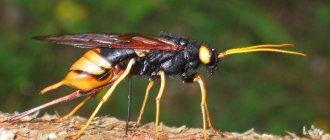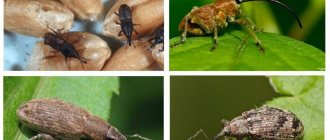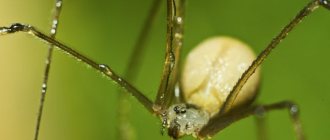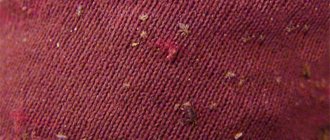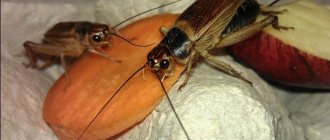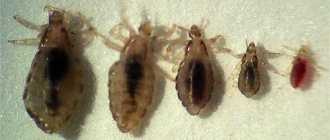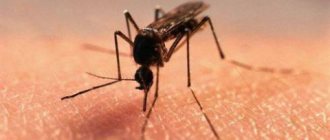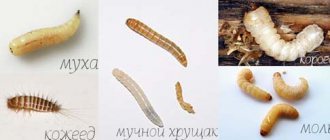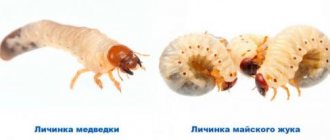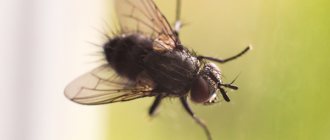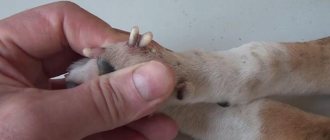Myiasis is a lesion of the body resulting from the penetration of arthropods into the human body. Infection begins with adult insects laying eggs on the skin, eyes, ears, nose, unprotected wounds, and also as a result of ingestion of fly larvae. Subcutaneous myiasis is the result of a careless attitude to the rules of personal hygiene, the cause of one’s own carelessness.
Insect larvae are very tenacious, capable of living and functioning in alcohol solutions or acid for some time. That is why the larvae are able to quietly exist in the human intestinal tract for more than one day.
Myiases are most common in Africa and South America. There are known cases of the disease developing in Russia.
Pathogens
In total, there are 18 species of flies that can infect the human body with myiasis. Some of them:
- Tumbu fly – causes damage to the skin;
- Sand flea - makes passages, leaving larvae under the skin;
- Tungrate fly - affects open wounds;
- Gadflies.
Myiases are random, facultative and obligate.
Accidental myiasis lesions begin with the entry of fly larvae into healthy organs, usually parasitizing in rotten tissues. This happens when using food and laundry contaminated with insects.
Facultative - the disease develops during the process of infection by larvae, usually living in rotten substances. There are known cases of eggs being laid on unclosed wounds and ulcerative lesions of the skin.
Obligate myiases begin when infected with the larvae of flies - parasites that infect herbivores. The gastrointestinal tract and genitourinary system most often become hostage to parasites. In rare situations, larvae may enter the brain and heart. The most dangerous is intestinal myiasis, which can lead to the death of the patient.
According to the complexity of the disease, myiasis is divided into:
Malignant myiasis. Arthropods leave many larvae on the surface of the infected animal, which penetrate into the body through the eyes and ears with great speed. The brain and internal organs may also be susceptible to infection. Tissues affected by the larvae begin to deteriorate, and the disease progresses to a more severe form with possible death.
Benign myiasis occurs after infection by a single individual. The course of the disease is mild, often unnoticed, and easier treatment is used, with positive results.
Prevention
To prevent the development of myiasis, the following preventive measures should be observed:
- fight flies that appear in the house;
- observe the rules of personal hygiene;
- keep the house clean;
- eat only thoroughly washed fruits and vegetables;
- store food correctly (in places inaccessible to insects);
- use fly repellent;
- promptly treat skin lesions;
- monitor the health of domestic and farm animals, promptly treat skin wounds, and regularly be examined to detect myiasis.
Those who live outside the city need to regularly mow the grass on their property. It is very important that external toilets, cesspools, and manure dumps are located as far from the house as possible. To eliminate the odors emanating from them that attract flies, special preparations are used.
Following these rules will help minimize the risk of fly larvae entering the body.
Symptoms of subcutaneous myiasis
The disease always occurs in an acute form. The soft tissues are eaten away by the larvae (damage to the bones is possible). On the outside, thickening of the skin with redness is noticeable. The disease has symptoms similar to intestinal perforation or organ abscess.
Infection with larvae most often occurs through contact with cattle. A female insect (gadfly) can lay eggs on human hair.
The onset of the disease often occurs without pronounced symptoms, later swelling appears as the larvae progress. Then a fistula is formed, in which the larva remains until it matures, after which it leaves the body through the hole.
The disease is accompanied by a severe allergic reaction and symptoms similar to those of toxic poisoning (nausea, vomiting). Symptoms may appear:
- Heat;
- Short-term muscle pain;
- Pain in the heart area;
- A formation under the skin with a sensation of heat and movement under the skin, changing its location;
- General weakness;
- Allergic manifestations, most often urticaria.
Pain during infection can be severe, sometimes leading to fainting. The period of parasitism can last no more than 6 days, but this time is enough to cause serious tissue damage.
Random
The diseases are caused by flies that usually lay eggs in rotting organic matter. A person becomes infected with these larvae accidentally by ingesting them in food or wearing underwear. For the most part, eggs swallowed by a person are dissolved by gastric juice, but sometimes maggots can penetrate the intestines, causing intestinal myiasis. If a fly lays eggs on wet laundry, the larva can penetrate the urethra, causing genitourinary myiasis.
Occasional cavitary myiases are caused by many flies:
- blue meat (Calliphora vicina);
- indoor (Musca domestica);
- green meat (Lucilla sericata);
- brownie (Muscina stabulans);
- small indoor (Fannia canicularis);
- fruit flies (family Drosophilidae);
- cheese (Piophila casei).
These are not the only, but the main types of flies that infect humans.
A person usually causes intestinal myiasis with cheese fly larvae by eating a dubious delicacy: rotten cheese infected with cheese flies.
Treatment
Skin myiasis in a person begins to be treated after an examination and an accurate diagnosis by a medical specialist. The diagnosis is determined by careful examination of the lesions in an enlarged format, when the movement of the larvae is noticeable. This usually takes more than one day. For cutaneous myiasis, the destruction of larvae with medications is not used. Surgical extraction is the most effective method.
At the beginning of treatment, the causative agent of the infection is identified, its location is located, after which the parasites are mechanically removed by the doctor. The lesions are cleaned of larvae by washing the wound with disinfectants (potassium permanganate, furatsilin, etc.). For easier extraction, 2-3 drops of sterile oil are used, as a result of which the parasite, being without air, should appear on the surface and can be easily removed. Treatment of the cavity with disinfectants and the presence of an aseptic dressing are required. To prevent purulent complications, antimicrobial ointments or antibiotics can be used.
It is necessary to use drugs for wound healing. It is also important to use intestinal lavage products and take anthelmintic drugs.
For additional treatment at home, you can prepare an ointment using tar, sulfur and petroleum jelly. Proportions – 6 g sulfur, 1 liter of petroleum jelly, 0.5 liter. tar. All ingredients are mixed and used as an ointment for the affected areas once a day.
Important : the main danger of myiasis is the short period of time from the moment of infection until the beginning of the growth of the larva, which quickly takes root in the patient’s body. Sometimes the size of the tumor reaches 5 cm. In some cases, the speed of movement under the skin is up to several tens of centimeters per day.
Diagnostics
If there is a suspicion that a person is infected with dipteran parasites, a dermatologist, infectious disease specialist, ENT doctor, ophthalmologist or surgeon (depending on the location of the pathogens) identifies the pathology by examining the affected area using a magnifying glass. Wounds or ulcers are often filled with maggots. They can be detected visually in vomit, in biological fluids, in feces and other excrement. If a person is sick with pathologies of the cavitary form, studies are carried out on various secretions and smears from the vagina.
Pathology is detected by examining the affected area using a magnifying glass.
Differential diagnosis is necessary to exclude helminthic infestations, salmonellosis, food poisoning, urethritis, viral rhinitis, and conjunctivitis. To make an accurate diagnosis, a person must take an enzyme-linked immunosorbent blood test in combination with a hemotest. ELISA allows you to obtain comprehensive information about the causative agent of the pathology, including:
- type and localization of the parasite in the patient’s body;
- the intensity of its colonies;
- residence time of larvae in tissues;
- the stage of their development;
- clinical picture of the disease;
- presence of complications.
To make an accurate diagnosis, a person must take an enzyme-linked immunosorbent blood test in combination with a hemotest.
Is infection possible?
Subcutaneous myiasis occurs due to the laying of eggs of flies or other dipterous insects in wounds or cavities on the human body. In the vast majority of cases, the ears, eyes, long-healing wounds, massive injuries and nasal passages succumb to infection.
In rare cases, subcutaneous myiasis occurs due to the ingestion of fly larvae along with food. This form of the disease is the most difficult to treat.
The following insects can provoke subcutaneous myiasis:
- Sand flea;
- Fly cabinet;
- Wohlfarth fly;
- All types of gadflies.
Please note that the treatment of this pathology must be carried out by a qualified attending physician. This disease is extremely dangerous and can easily lead to death.
Despite the terrible manifestations and serious consequences, treatment of subcutaneous myiasis is carried out with conventional antiparasitic drugs. However, they are taken in larger doses and for much longer. It is extremely difficult to cure subcutaneous myiasis on your own.
In the initial stages, when larvae are visible under the skin, you need to fill them with any oil or Vaseline so that they begin to come out. After this, pick them up with a knife or tweezers.
For subcutaneous myiasis to occur, contact with the pathogen alone is not enough. It is necessary that the insect finds a wound on your body and decides to lay larvae in it. This is quite a rare occurrence for developed countries. Most often, subcutaneous myiasis occurs in residents of hot and humid areas.
For infection, certain conditions must be met:
- Consume water or food contaminated with larvae;
- Ignore personal hygiene rules;
- Swimming in contaminated bodies of water;
- Constant contact with pets;
- Do not treat wounds on the body;
- Touching dead things.
Miaz u
cat
Flies and botflies can lay eggs and larvae on the human body. Larvae can penetrate a person from the ground, mosquitoes, laundry, etc.
Female flies lay eggs in the eyes, ears, nose, wounds of people or inject them subcutaneously; visceral damage is less commonly observed due to accidental ingestion of larvae. For example, members of the genus Gasterophilus, Hypoderma, Dermatobia and Cordylobia affect the skin;
Fannia affects the digestive tract and urinary system; Phonnia and Wohlfahrtia can infect open wounds and ulcers; Oestrus affects the eyes; as well as Cochliomyia penetrate the nasal passages and carry out their invasion.
The possibility of contracting all types of extensive cutaneous myiasis after communicating with an infected person is reduced to zero. This disease occurs due to patient contact with arthropods. It is possible to lay eggs not only in the skin, but also on other individuals (for example, mosquitoes), on things, through the use of which a person can become infected.
Biology
The development cycle of synanthropic flies consists of four phases: imago, egg, larva, pupa. Flies of some genera (Glossina, Wohlphahrtia) are viviparous.
The average development period of synanthropic flies from egg to adult at a temperature of 16°C is 20 days, and at +36°C it is reduced to 6.
Imago. The lifespan of adult flies under natural conditions is 18–20 days. In winter, in an inactive state - up to 6 - 7 months.
Adults can fast for only two days, young ones a little longer. Activity begins at a temperature of + 15°C. At +12°C they fly, but do not feed. The optimal temperature for life in the south is + 35°C, in the middle climate zone – +25°C.
Flies are light-loving, but oviparous females fly into dark places, but there are few flies in darkened rooms.
Food odors are attractive to flies, and oviparous females fly to the smell of ammonia. Synanthropic flies feed on various substances of plant and animal origin. These are food waste and human and animal excrement. These insects are characterized by frequent bowel movements (up to 50 times a day), belching, frequent meals, and mobility.
Mating period. Females lay eggs on accumulations of rotting matter. Fertility per clutch is about 100 eggs. As a rule, females die after 4–6 clutches, but can live further.
Egg. The development period depends on the temperature. Optimal values are from +20°C to + 40°C. With this regime, the embryo develops from 8 to 25 hours.
Larva. Having hatched, the larvae rush deep into the substrate on which the eggs were laid. The depth of their location depends on the ambient temperature. At temperatures from +12°C to + 17°C they can be found at a depth of up to 20 cm. In warmer temperatures (+ 23°C – + 30°C) - in the surface layers. A temperature of +52°C is destructive for the larvae of synanthropic flies.
The development of larvae is affected by the degree of aeration, so they are concentrated in places with sufficient air supply.
The optimal substrate humidity for larval development is 60–80%. Larvae are not found in semi-liquid and dried substrate.
Prepupa is a special stage of the fly larva when its growth is already complete. At this time, she stops feeding and crawls to a colder and drier place. The optimal duration of this stage is no more than 24 hours. Prepupae are capable of vertical and horizontal migration and crawl away from the breeding sites at a distance of up to 50 cm.
Doll. Under natural conditions, pupation is observed at a substrate temperature of +20°C - +25°C and humidity of 20 - 40%. Usually this process occurs in the soil at a depth of up to 60 cm. The pupa does not tolerate high humidity. The maximum temperature for it is +43°C. The minimum period of development of the pupa is 3–4 days.
Imago. Flies emerging from the puparia leave the soil, but do not fly away immediately. The fly sits motionless for about a minute. Then he runs quickly, but soon freezes again. She begins an active lifestyle only after 1.5 – 2 hours.
If all else fails
In this case, we can recommend another means of combating uninvited guests - insecticidal lamps, which are very effective and powerful devices that can completely destroy insects in the home in the shortest possible time. And an additional important advantage of such devices is their complete harmlessness for all household inhabitants, including pets.
This device operates on a very simple principle - the design of the device uses an ultraviolet lamp that emits heat, which attracts pests.
As soon as a fly, attracted by the radiation of the lamp, lands on such a grid, it is struck by a discharge, which is harmless to humans or animals, but fatal to an insect.
Probably, many of us have noticed that with the onset of autumn, some insects, especially flies, begin to show somewhat more aggression towards humans than usual.
Why do flies bite in the first place? Are there really blood-sucking flies? These questions are answered in this article. As well as an explanation for what makes blood-sucking flies show such an unhealthy interest in humans precisely in the autumn period, which only intensifies with the onset of the first cold weather.
What are the larvae called?
The name of the fly larva is well known to fishermen - maggots are an excellent bait. To breed them, a piece of spoiled meat is specially buried in the ground, from which a whole batch of worms is soon removed.
The name “maggot” comes from the word “dough” (dough that increases in size) - the larva grows so quickly. After maturation, a thin white worm appears from the fly egg, difficult to see with the naked eye. It lives and feeds in the same substrate where it was born. The process of gaining weight takes from 5 to 15 days. In favorable conditions, only 4 days are enough.
Description of the species
Wohlfahrtiagnifica is a species of gray blowfly. Insects are synanthropic organisms whose lifestyle is closely related to humans. The adult body size is up to 10-14 mm. The main body color is gray. There are three longitudinal black stripes on the mesonotum. There are black spots on the sides and in the upper part of the ovoid abdomen. The body is covered with a light gray coating and stiff hairs. The head is large, large compound eyes of a dark red color. Proboscis of licking type. The antennae are black.
The wings are wide, transparent, well developed. At the base and along the veins there is a smoky color. Jointed black limbs of the running type, covered with bristles. Sexual dimorphism in flies is represented by the location of the eyes. In the photo, the imago of the Wohlfarth fly, judging by the distance between the eyes, is a female; in males it is only 2/3 of the width of the eye.
The first instar larvae are small (1.5 mm), worm-shaped, white. After two moults, by the third instar she becomes leaner and larger. The body increases 10 times - up to 15 mm, becomes yellow. There are three oral hooks on the head. The thorax and abdomen segments are covered with brownish spines.
Information. The insect was first described by the German physician Wohlfarth in 1770.
Facultative myiases
This group of diseases is caused by flies that normally breed on animal corpses. They cannot lay eggs in a person in the literal sense of the word. Insects lay eggs either in open wounds or on intact skin, ears or nose.
Flies do not have an ovipositor that can pierce the skin. Therefore, all photos of a fly laying larvae under the skin are Photoshopped.
The hatched larva itself penetrates the epidermis and develops there for 2-3 weeks. The fully developed maggots leave the body and fall to the ground. There they pupate and after a while adults emerge from the pupae.
Depending on the place where the clutch was made, the larvae penetrate not only under the skin, but also into the eyes, nasal cavities and skull. In this case, the expression “brain eaten” ceases to be figurative. Maggots that have penetrated the cranial cavity feed on brain tissue.
Facultative myiases
If fly larvae get into the eye, they can only be removed surgically. The easiest variant of ophthalmomyasis is the penetration of maggots into the conjunctiva. If it penetrates the eyeball, the disease can result in loss of the organ of vision.
In the United States, there have been cases of gray blowfly maggots penetrating deep into the internal tissues of the body.
Removing fly larvae from under the skin, nose and eyes is only possible through surgery.
Who is the Wohlfarth fly?
Due to their almost identical sound, the insect is often called a tungsten fly. The name is incorrect, but the metal tungsten is more or less well known, but no one has heard of the scientist Wohlfarth. The fly is named not after the metal, but after the scientist-doctor who first described this two-winged creature.
There is no need to worry about Wohlfarth fly bites. She has nothing to bite with, since her mouthparts are of the licking type. It is dangerous for the same reason that one should be wary of the sheep gadfly. In adult gadflies, the oral apparatus is underdeveloped and in the adult stage they do not feed, but lay eggs. Both the sheep gadfly and the Wohlfarth fly often confuse a person with an animal when breeding.
Why do random and facultative myiases occur?
The main cause of these types of disease is common unsanitary conditions. Neglect of personal hygiene and room cleanliness leads to the proliferation of flies, which sooner or later will lay eggs on humans.
Obligate myiases
Caused by flies that initially parasitize warm-blooded organisms. Their other name is gadflies. The reproductive cycle of different individuals may include parasitism of maggots in the stomach, nasal sinuses, or skin.
The gastric botfly attaches eggs to the forelimbs of herbivores. When an animal scratches its leg, it inadvertently ingests eggs, which begin to develop in the gastrointestinal tract. Gastric botfly eggs do not die in the intestines, but humans have little chance of becoming infected with these parasites. The disease is treated with routine deworming of animals. Standard anthelmintic drugs also help a person.
The subcutaneous gadfly usually also attacks large herbivores, laying 1 egg per hair. It does not have a specific point of attachment for the egg. The hatched larva burrows into the skin and begins feeding on the host's flesh. Before moving to the second stage of development, it lays a subcutaneous path to the area of the animal’s back, where it forms a nodule with an opening for air.
Reproduction
The lifespan of females is from 1 to 4 weeks; males live much less. Developmental cycle of Sarcophila Wolfartii with complete metamorphosis. However, females are viviparous - they do not lay eggs like their relatives, but carry them in their bodies. Born larvae go through 3 stages of maturation, the intervals of which are 2 molts.
After 2 weeks from the moment of mating, first instar larvae are born, developing exclusively in the tissues of humans and warm-blooded animals. They leave the mother's body in groups of 10-20 pieces.
Reproduction of the Wohlfarth fly
Reproduction
The lifespan of females is from 1 to 4 weeks; males live much less. Developmental cycle of Sarcophila Wolfartii with complete metamorphosis. However, females are viviparous - they do not lay eggs like their relatives, but carry them in their bodies. Born larvae go through 3 stages of maturation, the intervals of which are 2 molts.
After 2 weeks from the moment of mating, first instar larvae are born, developing exclusively in the tissues of humans and warm-blooded animals. They leave the mother's body in groups of 10-20 pieces.
Reproduction of the Wohlfarth fly
Reproduction
Many have seen whole hordes of small white worms on carrion, but not everyone knows where they come from, and even in such quantities. They cannot come from nowhere; they are the ones that are deposited in the decaying remains of the carrion. Attracted by the smell of corpses, it begins to feed on the protein compounds of carrion. Once saturated, she is ready to lay eggs. One clutch can contain up to 150 eggs.
During the day, after each meal, a fly can make 3-4 clutches. She chooses a secluded place for her future offspring - she climbs deeper into a dung heap or under carrion. There, from the eggs, after 12-24 hours, those same white worms with black heads are born. They do not have jaws and cannot bite decaying remains. But they have a special secret in their saliva that can turn solid food into liquid.
Reproduction of the green fly After the rot or manure has become soft, the larva can feed by sucking through the mouth opening. This is how the larvae digest food before eating it. After 7-12 days, the larvae crawl into the ground or burrow under a layer of humus and pupate. Under favorable conditions, an adult green blowfly emerges after 2 weeks.
